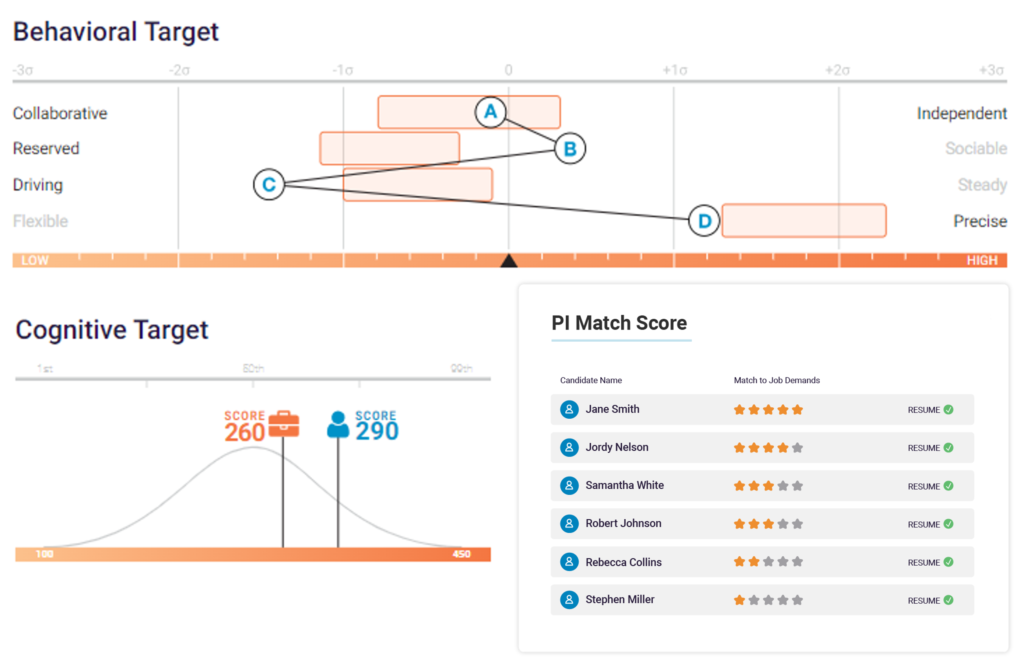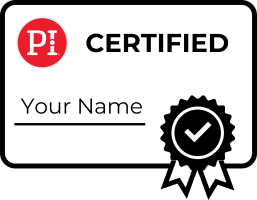CLIENT NEWSLETTER FEBRUARY 2024: POLICY FOR ASSESSMENT USAGE, VIRTUAL PI CERTIFICATION, USING JOB TARGETS TO INCREASE OBJECTIVITY AND REDUCE BIAS, CREATE A COMPELLING JOB ADVERTISMENT, THE 17 REFERENCE PROFILES

A Policy for Assessment Tool Usage
If you do not already have a policy for how your organisation uses the PI assessment tools, we strongly recommend developing one! This is to ensure that everyone handling assessment results use more or less the same approach, ultimately to ensure that all of your assessment takers are treated equally and fairly. The policy should cover things such as:
- At what stage in the talent acquisition process do you apply the tools?
- Do you use PI for all positions and levels in the organisation or only for some?
- What information do you share with assessment takers?
- Do you reassess people who have previously taken the assessments?
Our general recommendation would be to use the tools at a fairly early stage in a recruitment process, and at all levels, although it might make sense in some cases to exclude certain groups. We also recommend having a feedback conversation with the assessment taker to verify the results, and we do not recommend reassessing employees, except in very specific cases. Reach out to us if you want more information about this and get some best practice examples from other PI clients.
Using Job Targets to Increase Objectivity and Reduce Bias
Setting job targets can help to mitigate bias in the hiring process. If you start looking at assessment results without having a job target to compare them to, you will likely be sorting through candidates using an assumption of who would fit the role best. In other words, there would be very little objectivity in the process. By setting job targets, you can easily see which candidates are suited for the role based on predetermined requirements. Inherently, there is little bias in the process, resulting in better decision making and an increased probability of hiring the right person for the job.
Create a Compelling Job Advertisement
A great job advert that accurately describes the job you are hiring for and your organisation as a workplace will help you attract more applicants. Before you start describing your ideal candidate in the job ad, consider what the new employee needs to have from day one in order to succeed, as well as what they can learn after you hire them. Consider limiting your requirements to the non-negotiables instead of including a long list of things that are nice to have but are not strictly necessary – this will widen your candidate pool, making the talent acquisition process more inclusive. Skills, competencies, and experience can in many cases be built on over time whereas motivational drives and general cognitive ability are statistically stable over time. Using these important data points to find a natural fit with the cognitive and behavioural requirements of the specific role will greatly improve your chances of retaining the talent you hire. The PI Job Assessment can help you objectively define the job requirements, and once you have agreed on a job target you can use the Job Report to find the right words for the job advertisement – words that accurately describe what you are looking for so you can attract candidates who can see themselves in the role. Also, check out Humanostics‘ Guide to Job Ad Phrasing for general advice on creating a compelling job advertisement.
VIRTUAL PI CERTIFICATION
Did you know that you can get PI certified in a virtual environment? Humanostics offers virtual training on a regular basis. The virtual training consists of 5 x 3 hour live sessions plus a bit of self-study learning and homework in-between. Our next virtual certification is scheduled for March 18-22 from 2:30 pm to 5:30 pm CET. Sign up directly HERE or send an email to our training team for more information.
THE 17 REFERENCE PROFILES
If you want a quick, high-level understanding of what drives a person, the 17 Reference Profiles can be used as a shorthand description of a person’s drives, needs and behaviours. They are of course not nearly as specific as the individual PI profile, but they are handy when you just need an overall view of a person and want to create a common language around PI. See your reference profile on your report, and learn more about reference profiles HERE.










